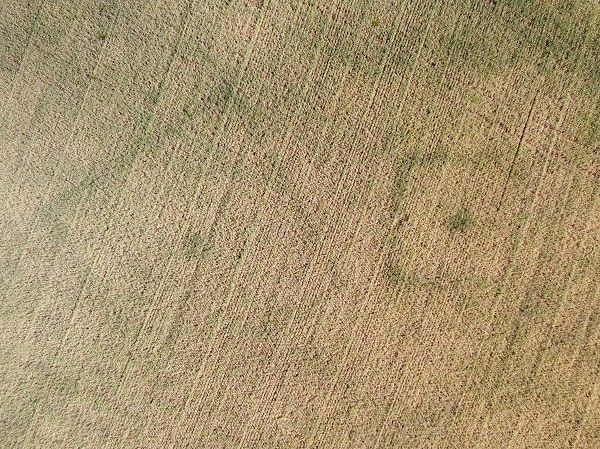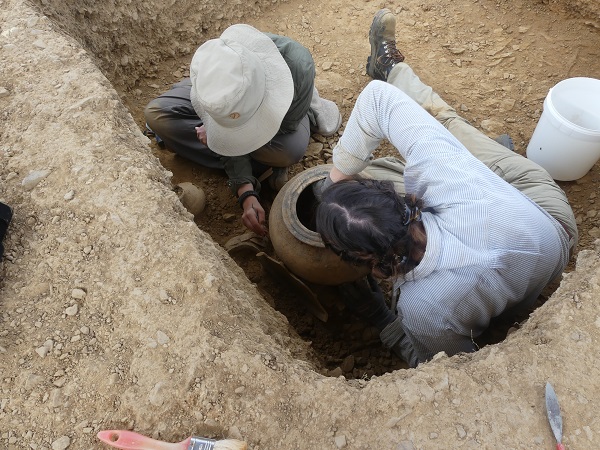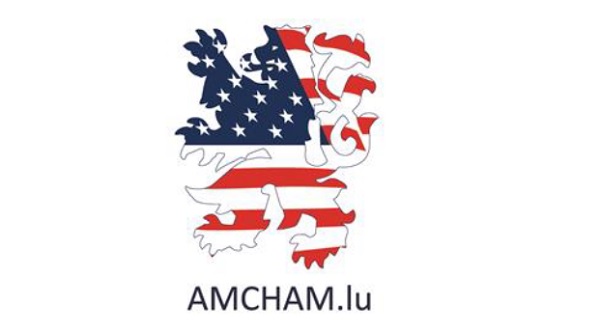 Structure 3 during the excavations;
Credit: Credit: I. Hadzhipetkov © INRA
Structure 3 during the excavations;
Credit: Credit: I. Hadzhipetkov © INRA
Chronicle.lu has teamed up with Luxembourg's National Institute for Archaeological Research (Institut national de recherches archéologiques - INRA) for a series of articles on archaeological digs and discoveries around the Grand Duchy.
The series explores digs spanning from prehistoric to Roman and medieval times, highlighting key finds and what they reveal about Luxembourg’s past. It also sheds light on the work of the INRA and its approach to archaeological and historical research.
The latest article in this series looks at the early Roman burial place at Heinerscheid-Auf Fring.
The burial ground at Heinerscheid-Auf Fring lies in the northeast of Luxembourg, on the edge of a high terrace overlooking the Our Valley. The site was first discovered in 2021 by Cliff Nosbusch, co-founder of the association Éisleker Geschichtsfuerscher, who noticed an unusual patch of greener crops, which hinted at dug structures beneath the surface. This observation was passed on to the INRA, and the site was soon included in a project aimed at identifying and examining archaeological sites from the protohistoric period that are at risk due to erosion and agricultural activity.
The excavation of the site took place between 7 and 22 July 2025. The team included two experienced archaeologists, four archaeology students from the region and members of the Éisleker Geschichtsfuerscher, since the initial idea was to not only explore the site, but also to give young archaeologists and enthusiasts the opportunity to be part of the project.
Aerial photographs and geophysical measurements that preceded excavations allowed the identification of two burial complexes, each consisting of a central grave chamber surrounded by a square ditch. Although no burial mounds were visible on the surface, the sediment accumulation in the ditches indicated that such structures had once stood there.
The first burial complex featured a ditch, 19 metres long on each side, 1.5 metres wide, and dug 0.8 metres deep in the bedrock. A square pit measuring 2.3 metres on each side, in which a wooden grave chamber was situated, was dug in the centre of the enclosed area.
Following the customs of the time, the deceased had been cremated, with the ashes placed in the corner, on the chamber floor. The grave goods were located on the opposite side of the chamber and consisted of a set of ceramic vessels (a large storage pot, several dishes, cups, etc.), three small "fibulas" (brooches) and a personal grooming kit containing scissors, a razor and two "strigils" (tools used by the Romans to cleanse the body by scraping).
The second grave complex was smaller, with a square ditch measuring just 10 metres on each side, although it was similarly constructed. Its wooden chamber lay in a rectangular pit, 2.45 by 1.45 metres in size. Inside were found the cremated remains of another individual, along with similar set of ceramic vessels, a bronze fibula and an iron razor.
While further analysis is ongoing, the artefacts found and the way the graves were arranged suggest that the people buried here were Romanised members of the elite who lived at the beginning of the 1st century AD, during the reigns of the emperors Augustus, Tiberius, Caligula and Claudius. Studies of the context, artefacts and human remains are continuing and are expected to shed more light on the individuals and the world in which they lived.

Bird's-eye perspective view of the Heinerscheid-Auf Fring site; Credit: © Cliff Nosbusch

Structure 5 during the excavations; Credit: I. Hadzhipetkov © INRA








